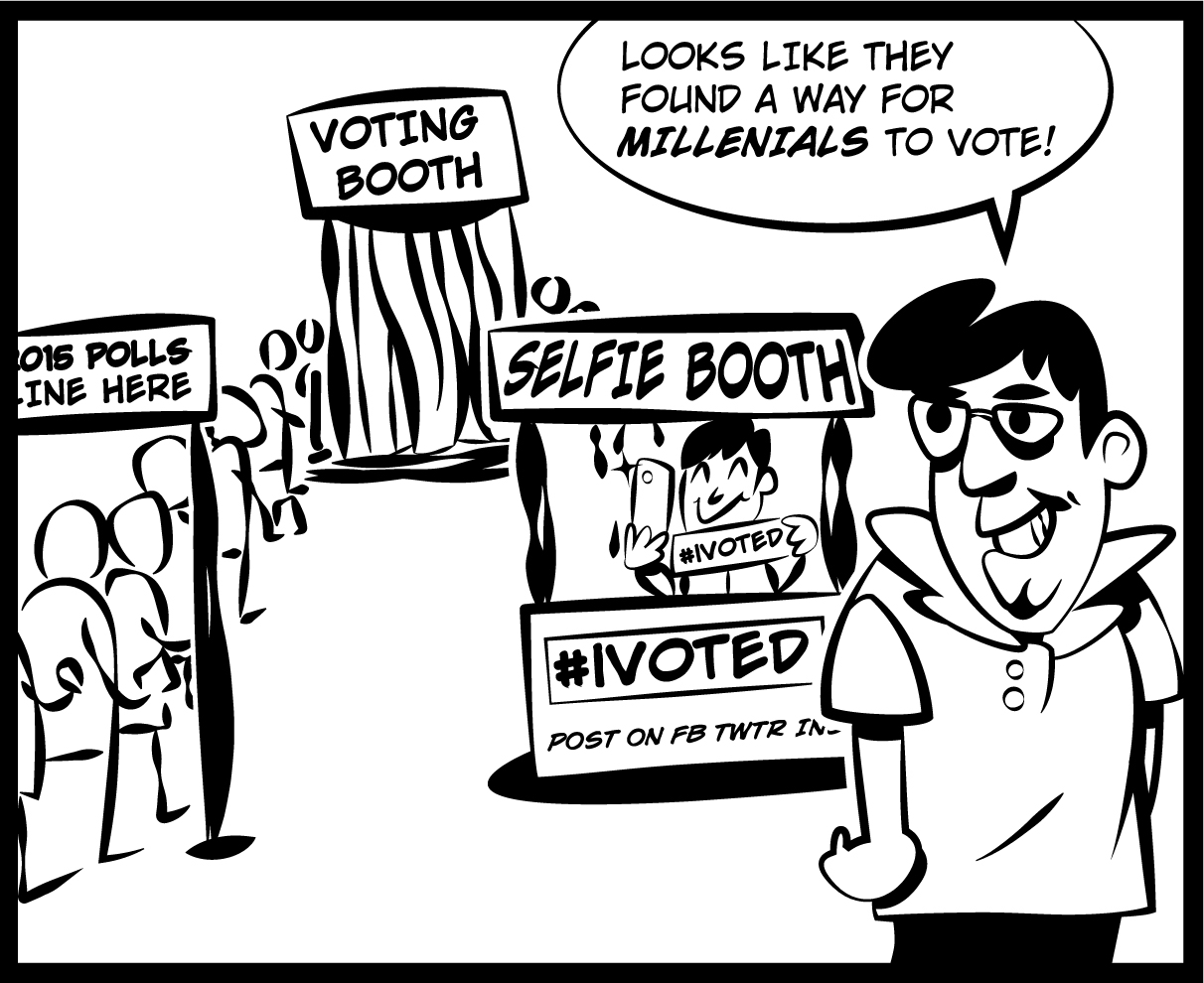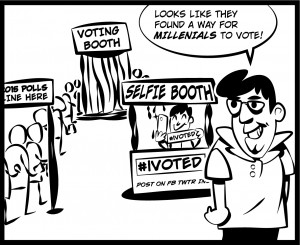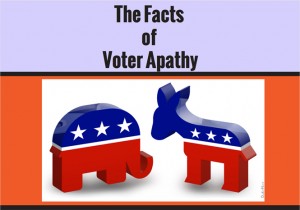
The struggle, the fight and the apathy for voting

Less than 100 years ago voter restrictions drew a line in society between whose voice counted and whose didn’t, denying people rights and responsibilities of citizenship based on race and gender. The white-male-property-owner political identity met with a head-on collision of activists that were bound together as outcasts by the government. Turbulent years of fighting, protests, tension, jail time, ridicule and social exile finally resulted in movement that granted all American citizens the right to vote.
After the struggle and hard-won victory of Women’s Suffrage and The Civil Rights Movement, why is it that so many of today’s voters couldn’t care less when it comes to the polls? Why has it become more of a national priority to vote for the winner of “Dancing with the Stars” and “American Idol” rather than the leader of our country? All the protests and reformations were efforts to reach this point in United States history – equal voting rights for all citizens. Yet the long-contended right is so easily relinquished by many in a moment of voter apathy.
Voter apathy could be a result of the lack of awareness of the influence voting has on everyday life. On some level, underneath all the pressing matters of day-to-day life, like where to go for lunch and how to pay off that student loan, we know the importance of voting. We understand the progress we’ve made and pride ourselves on the fact that the U.S. recognizes lawmaking and legislation as an ongoing conversation between the government and the governed, so why do large numbers of eligible voters simply not vote?
“We the people,” the masses, the meat and potatoes of the country if you will, inevitably affect the school systems, roads, policies and practices throughout the nation whether we contribute to the vote or not, but as the saying goes, it takes two to tango. The relationship between the apathetic voter and the disconnected politician has gone on far too long. The redundancy of the parade of potential candidates across the television screen – you know, in debates where they discuss solutions to the media’s high profile issues and insult each other – does less to engage voters and, instead, drives them toward indifference. The need to listen to the same stream of arguments and suggestive “he said, she said” sound bytes on repeat has already been fulfilled by the audience’s choice of housewives reality TV show, thank you.

Young voters are especially indifferent to the campaigns, and the inability to engage young voters has been proven by the polls. In a study done by Census.gov on the voting population in 2012, the percentage of eligible population vs. voting population was imbalanced: citizens 65 and older made up 19.1 percent of the eligible population and 22.3 percent of the voting population, 45-64 year olds made up 35.6 percent of the eligible population and 39.1 percent of the voting population and 18-29 year olds made up 21.2 percent of the eligible population and only 15.4 percent of the voting population.
Disproportionate representation in the polls perpetuates a system of unequal representation where the laws, benefits and programs are directed towards those who vote. Elections are a chance to communicate with the government what changes need to be made and who citizens see fit to make those changes. Cutting that communication off by not voting results in being ignored; politicians won’t know what we want unless we tell them.
Online voting could potentially improve current voting standards by encouraging more young voters to contribute to political processes, like local and national elections. Potential voting fraud continues to be an issue, but regardless of whether people vote at local polling places or online there are ways to commit voter fraud. Currently, the voter ID requirements ranges from state to state; from no document required in New Jersey, to strict ID laws with a photo in Texas and an ID with no photo in Utah, making plenty of room for misrepresentation and errors made on both electronic and paper ballots.
It’s time to establish a consistent, nationwide electronic voter ID system that citizens can access from anywhere. Assigning registered voters across the U.S. each their own ID, complete with a unique ID number and a photo, would help prevent fraudulent activity, like voting multiple times, by locking the network once a person has logged on and voted. ID numbers could be kept track of as they are distributed, making it easy to detect illegitimate activity in the case of hackers. Despite the disparities from state to state, the remaining truth is that citizens need to vote. It’s easy to blame the apathetic nature surrounding the polls on today’s young voters but it’s the voting system that needs to be adapted to modern standards in order to have an efficient and inclusive representation of U.S. citizens in elections.
LEARN MORE ABOUT THE ISSUE
- Visit http://uhclthesignal.com/wordpress/2015/11/16/interactive-graphic-the-facts-of-voter-apathy/ to view the interactive graphic “The facts of voter apathy” by The Signal reporter Monica Luna.
- Read more about the outcomes of the recent elections in The Signal reporter Alyx Haraway’s article “Runoff election scheduled for Houston mayoral race.”
